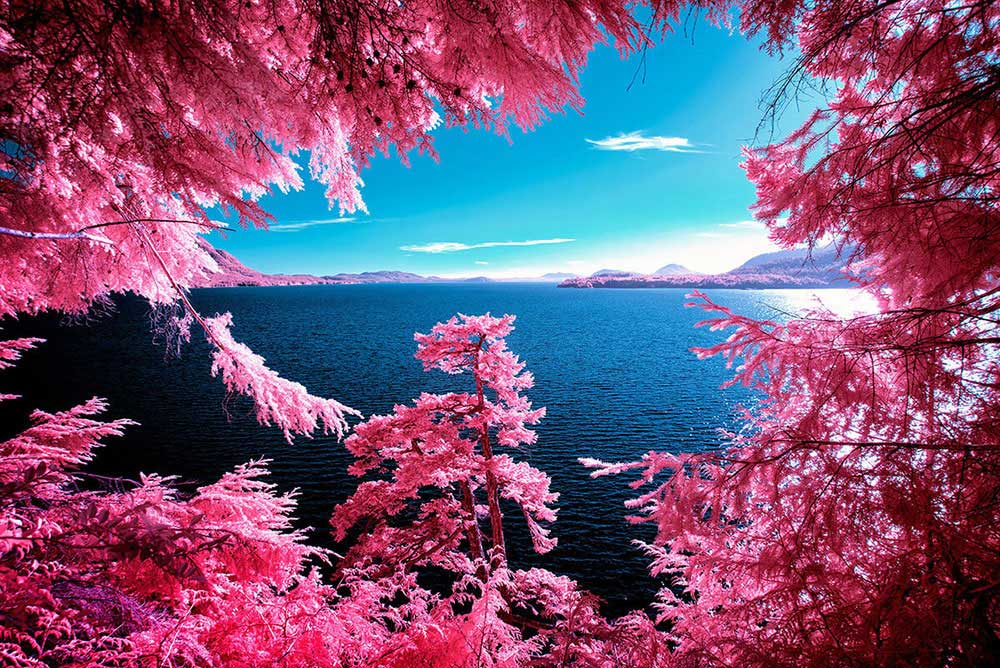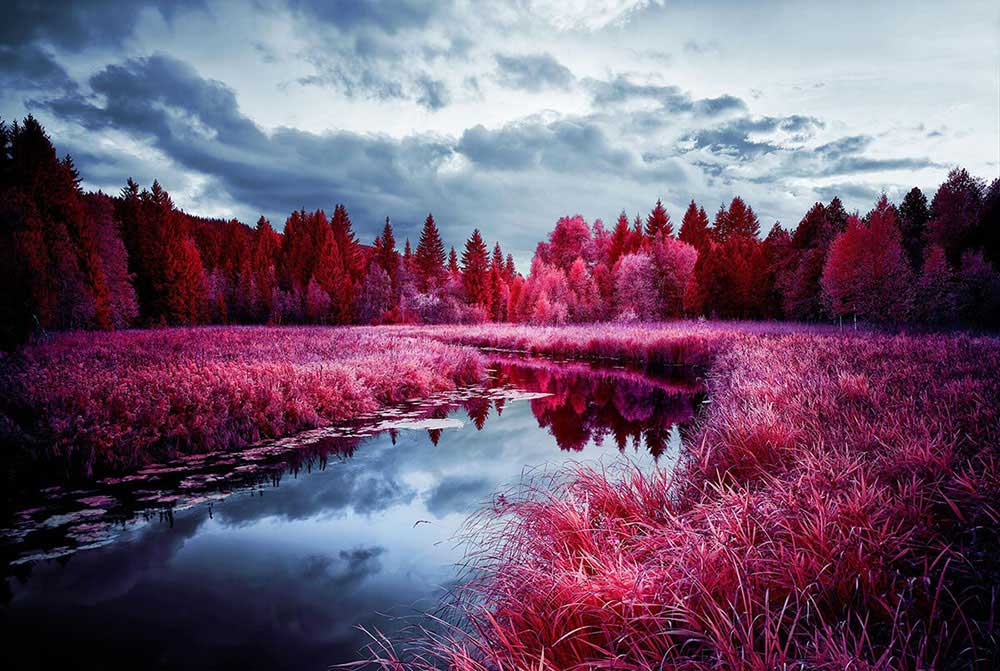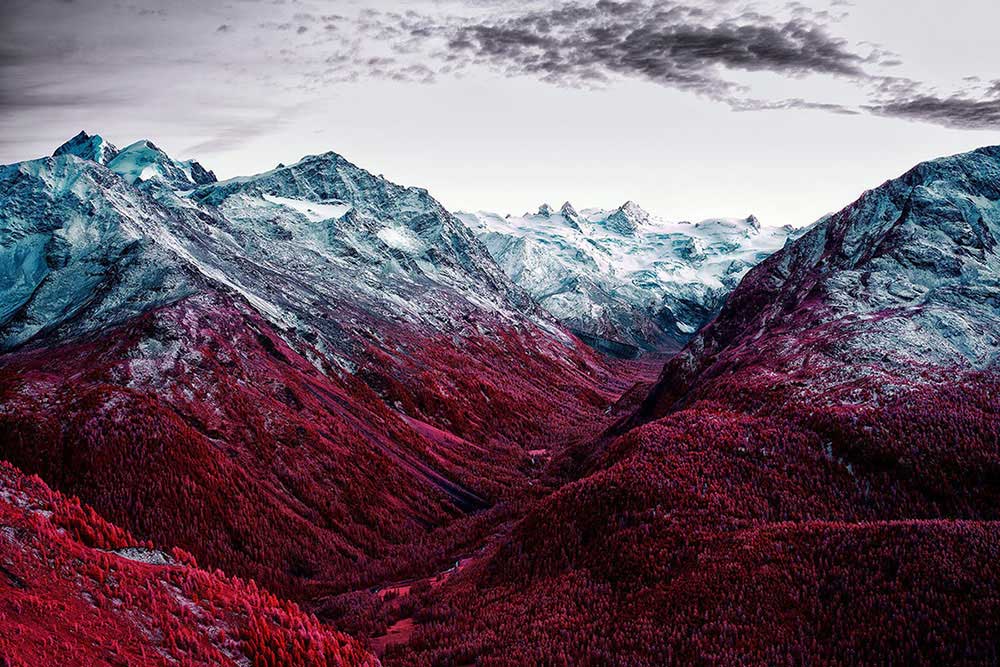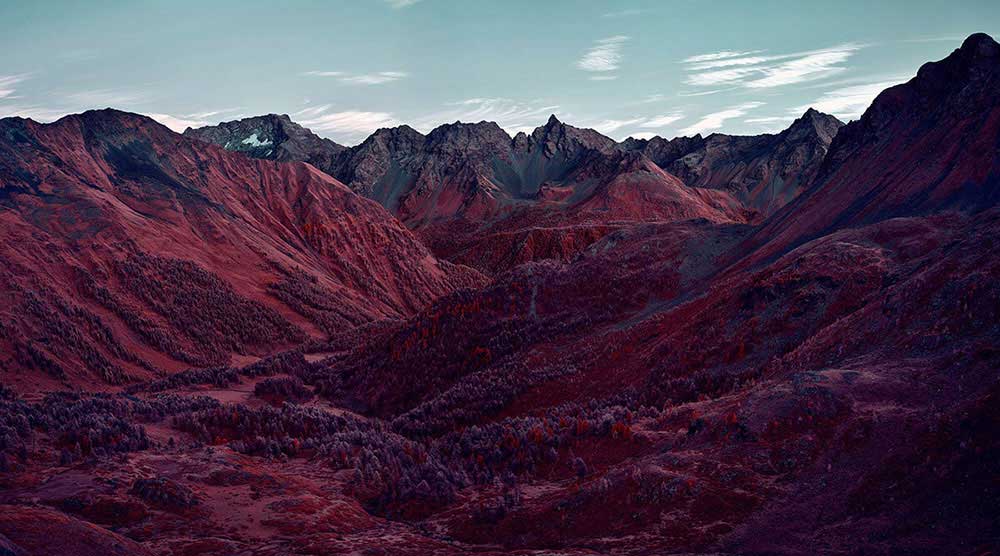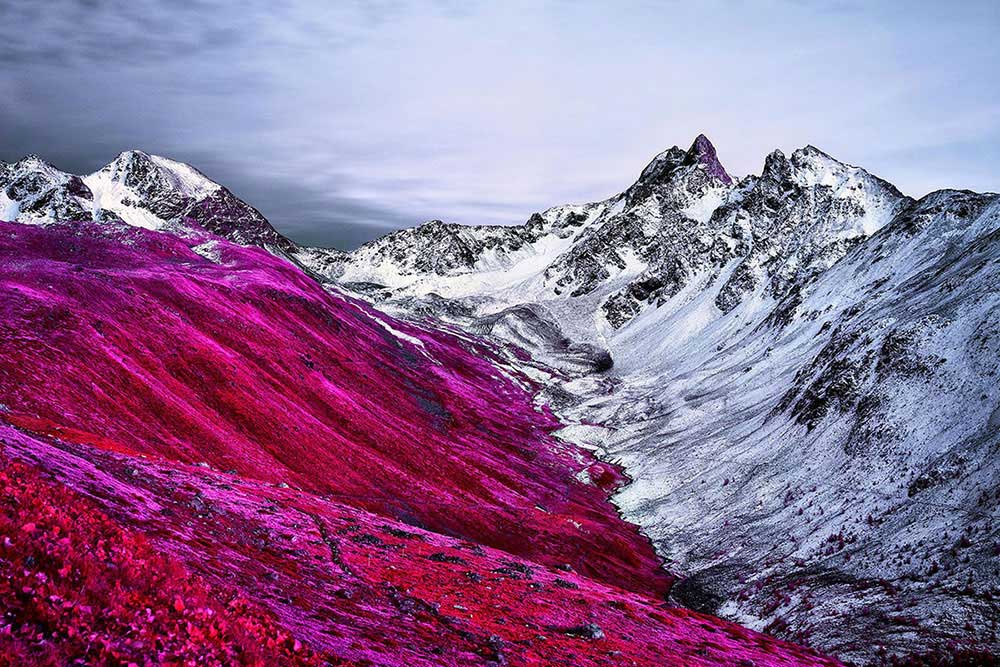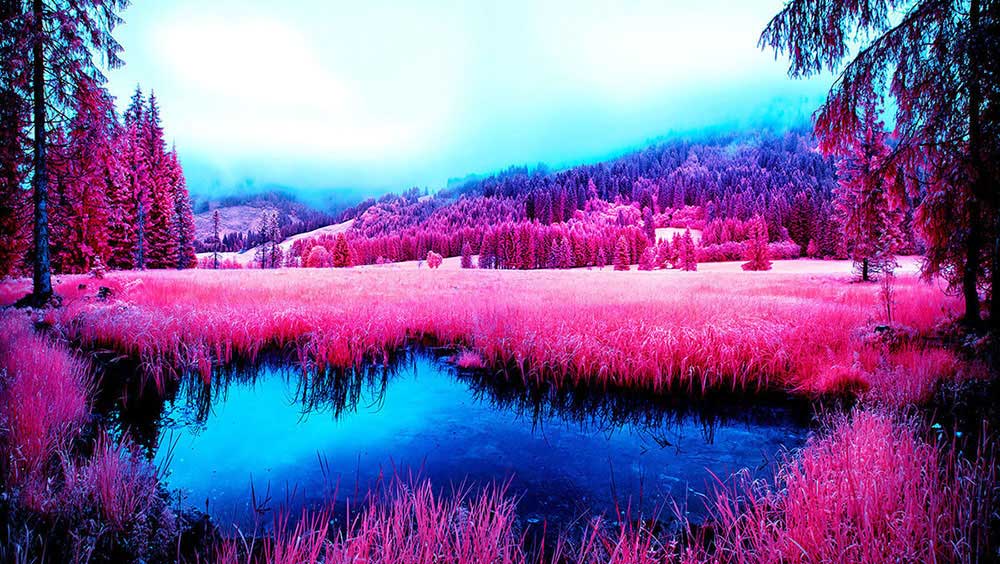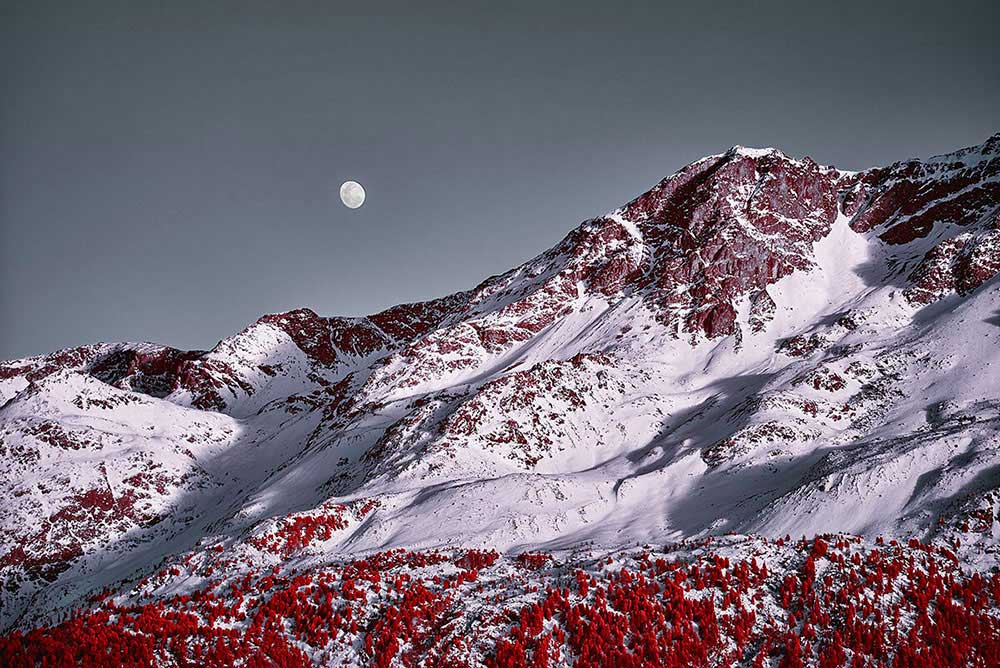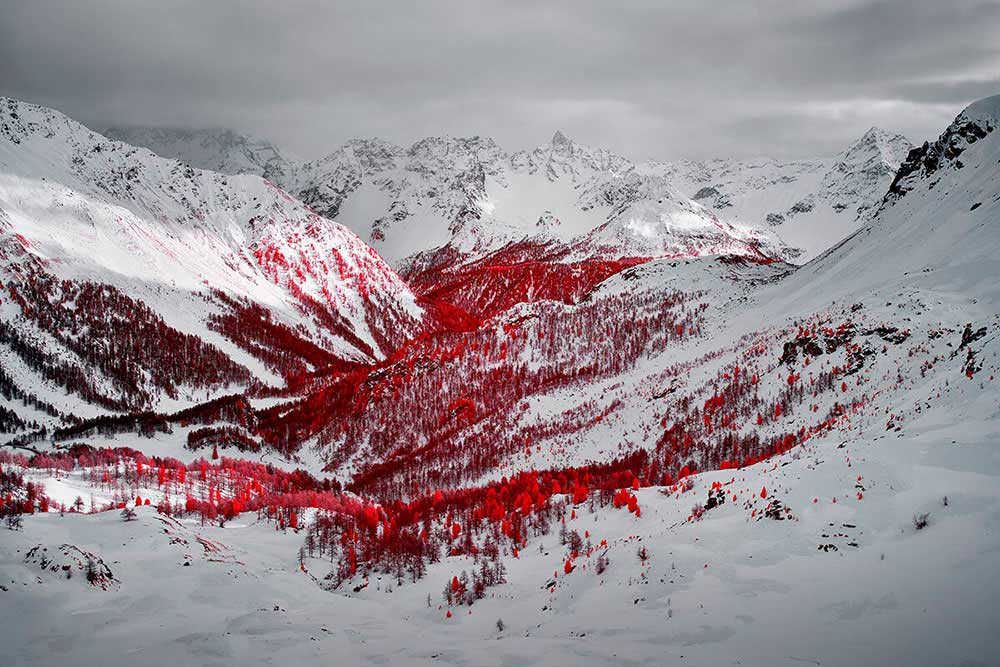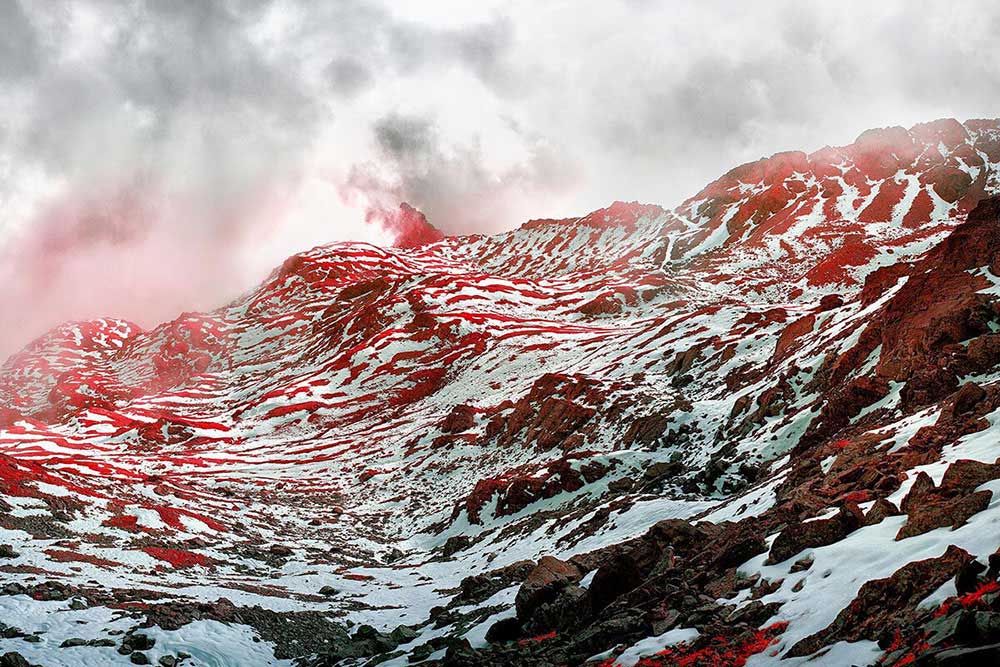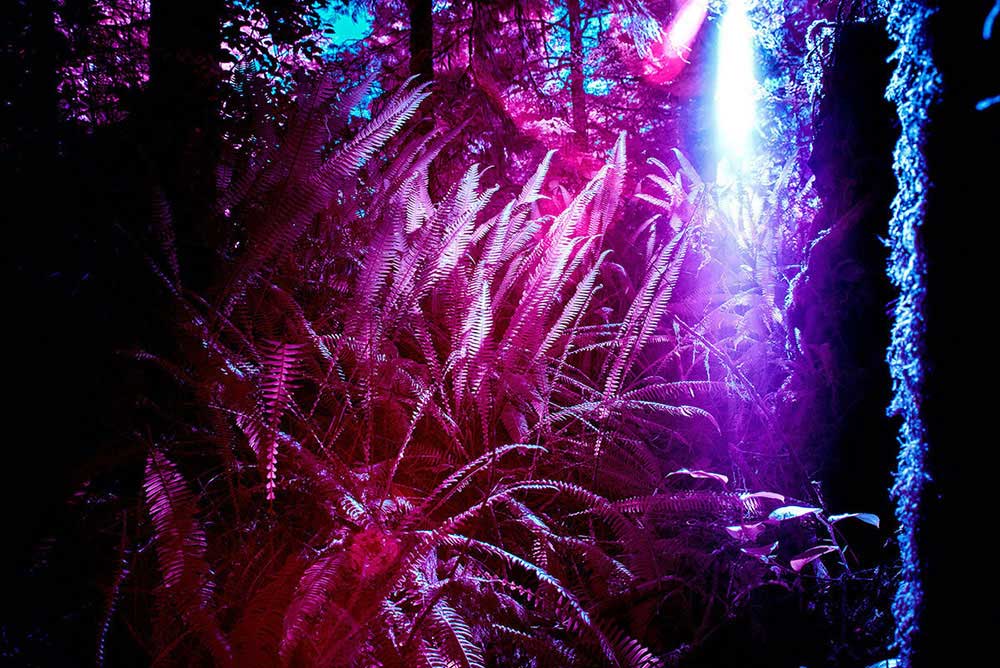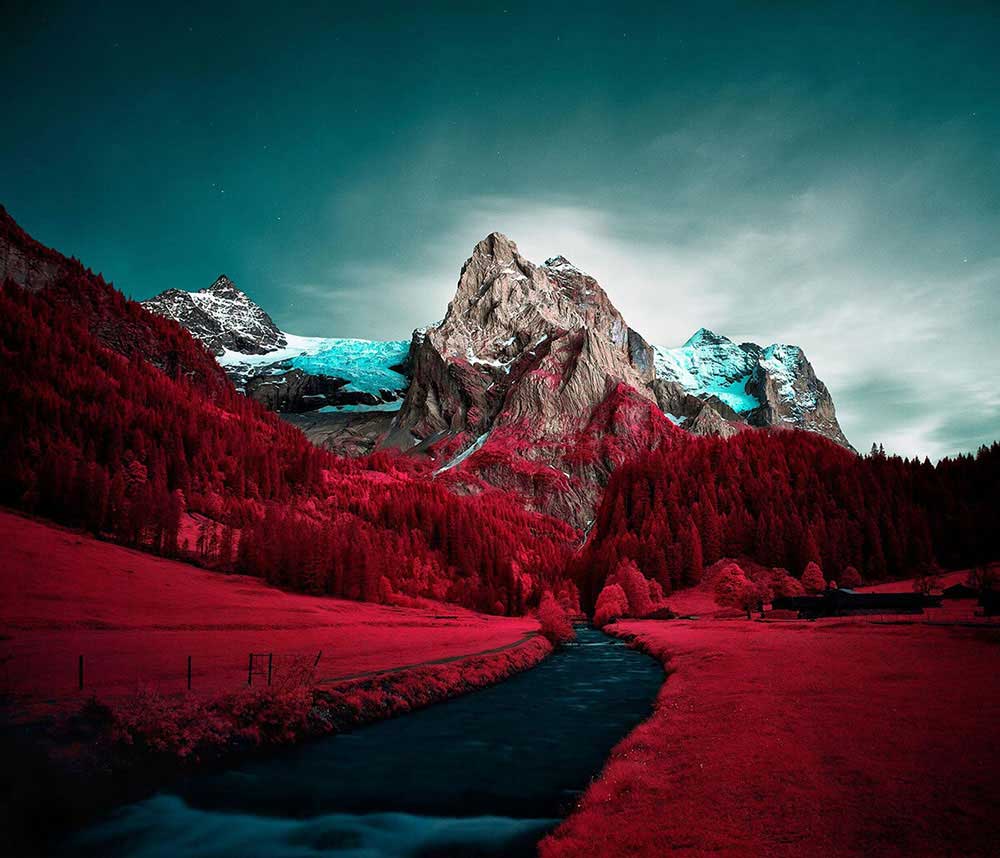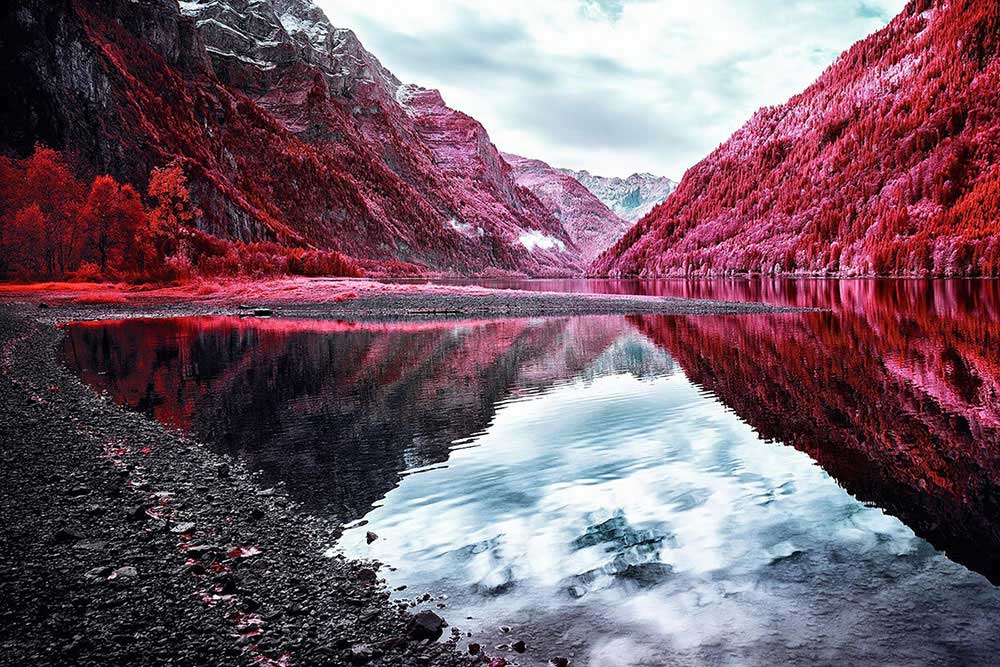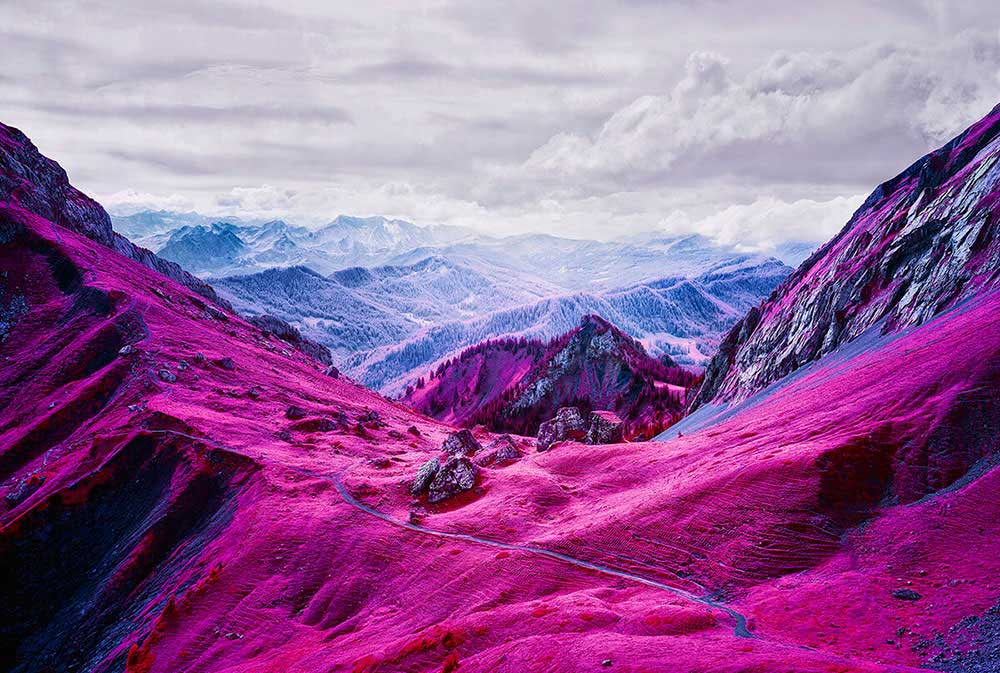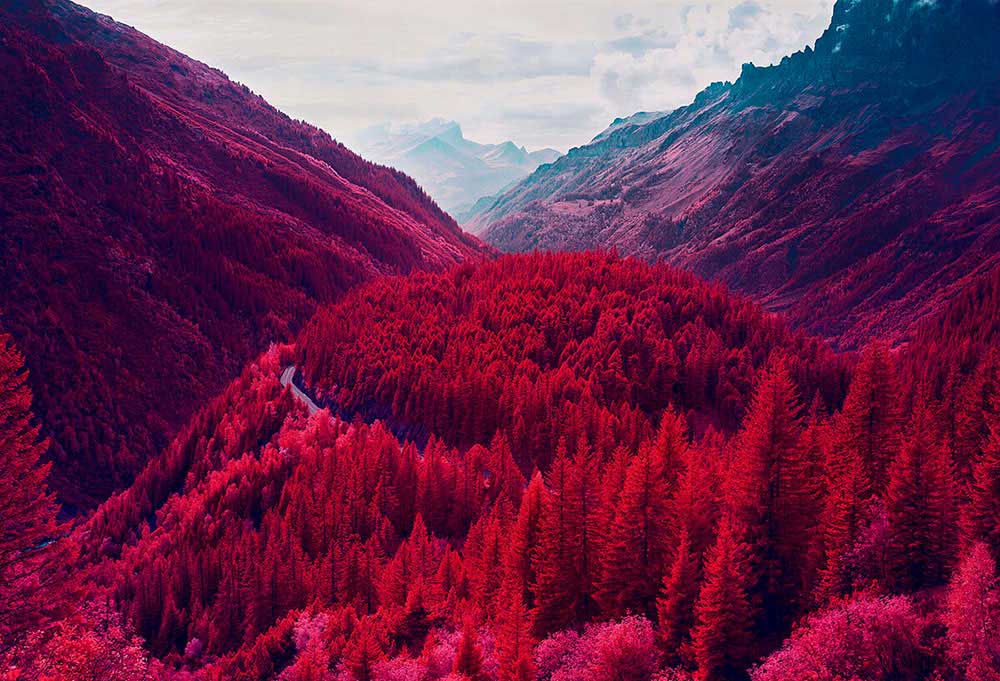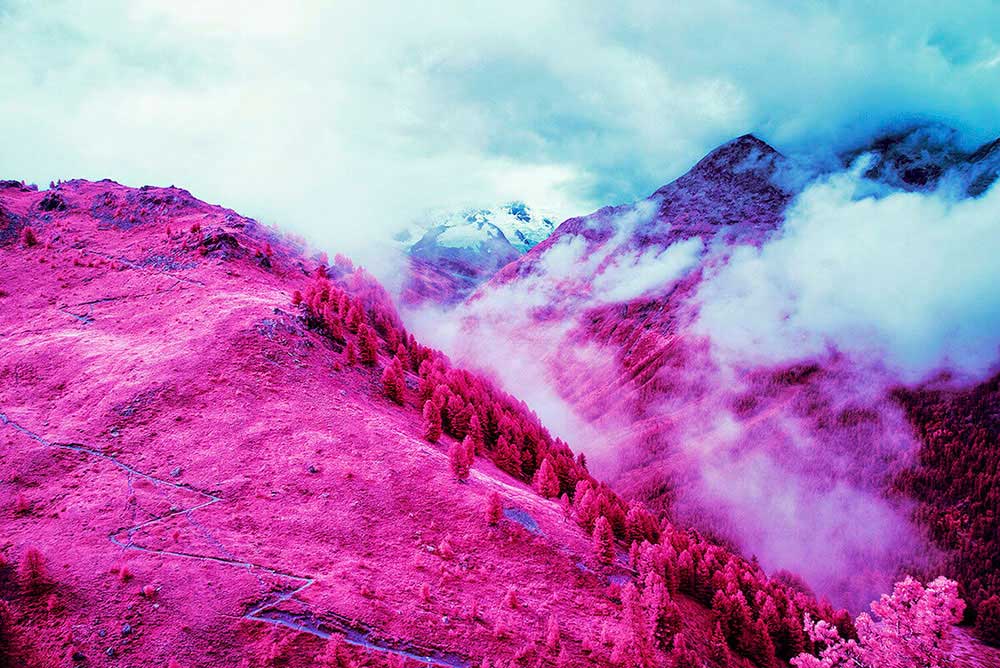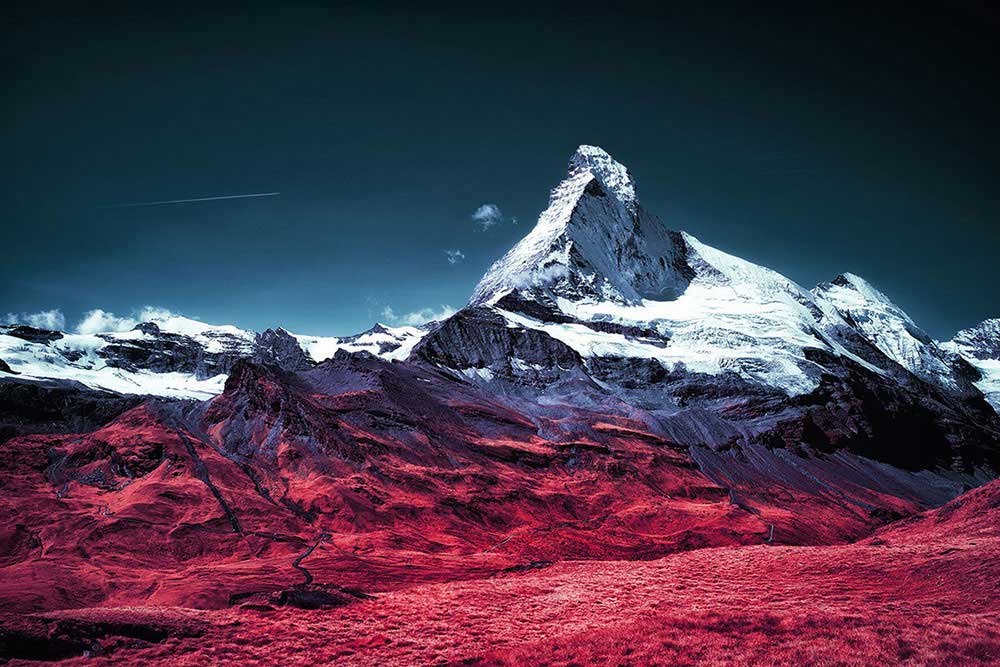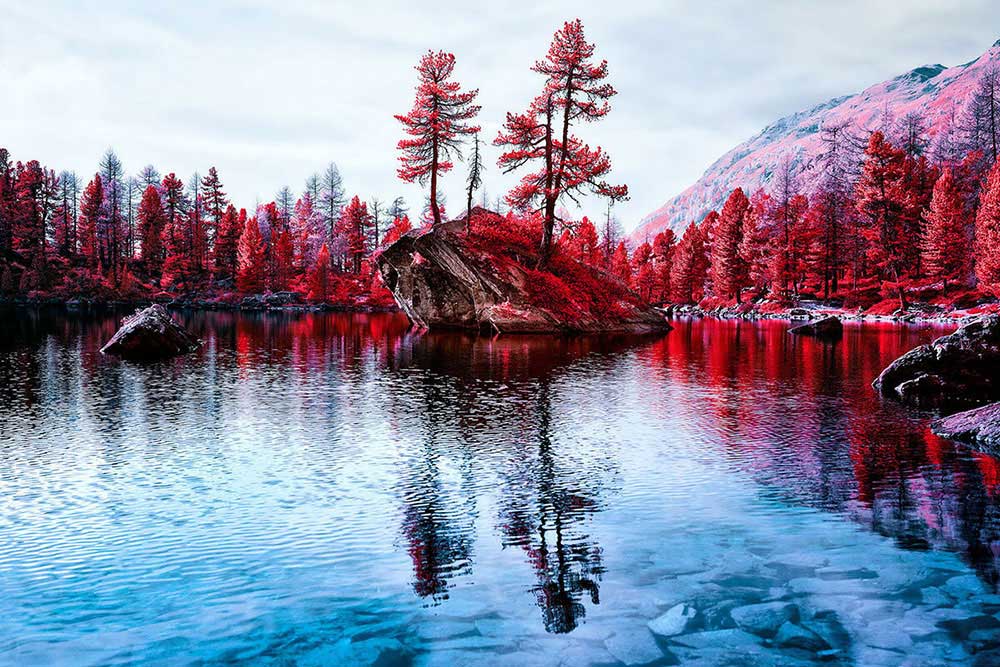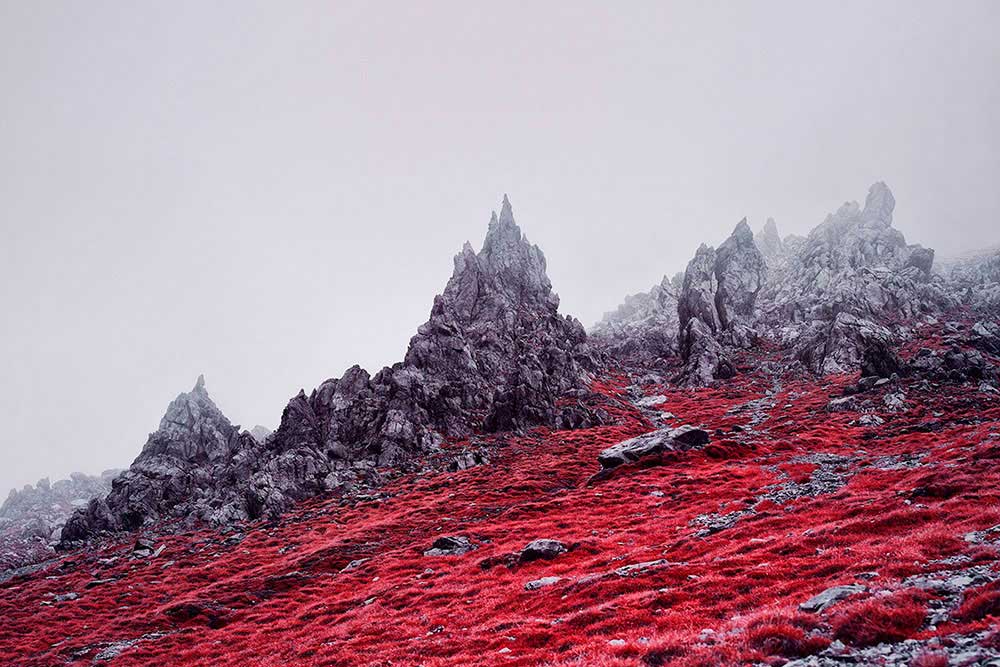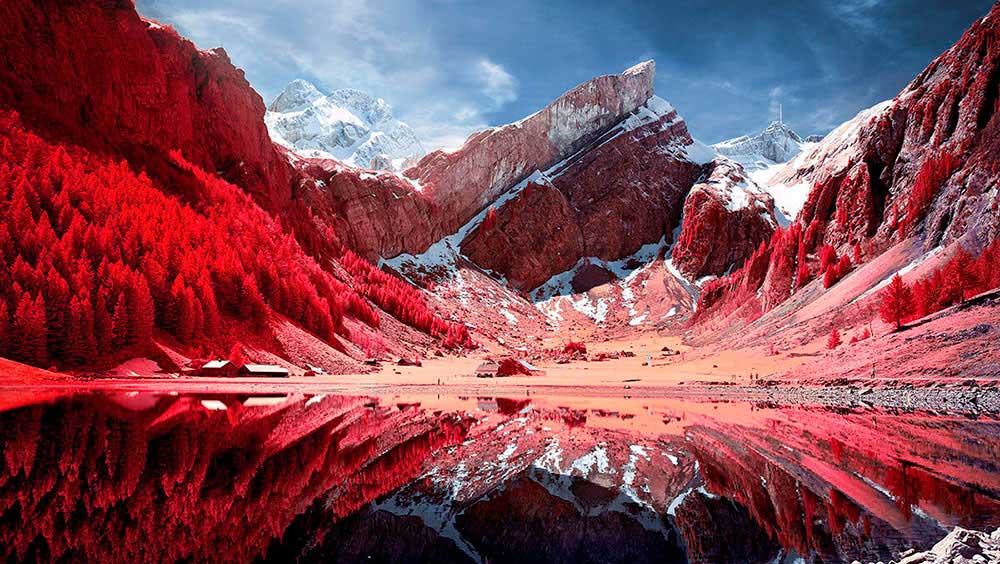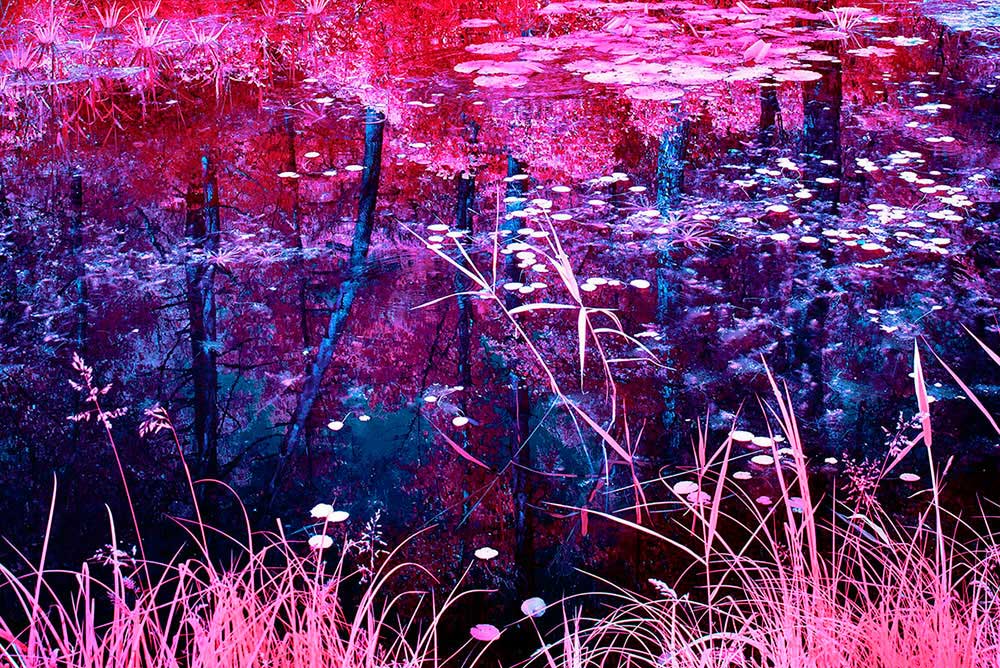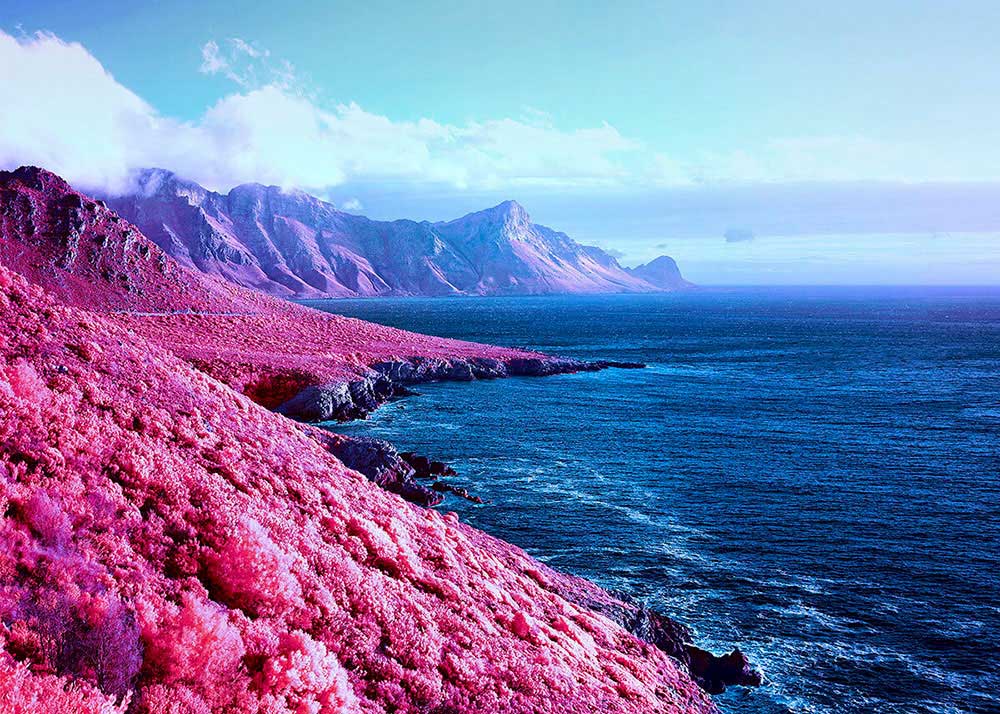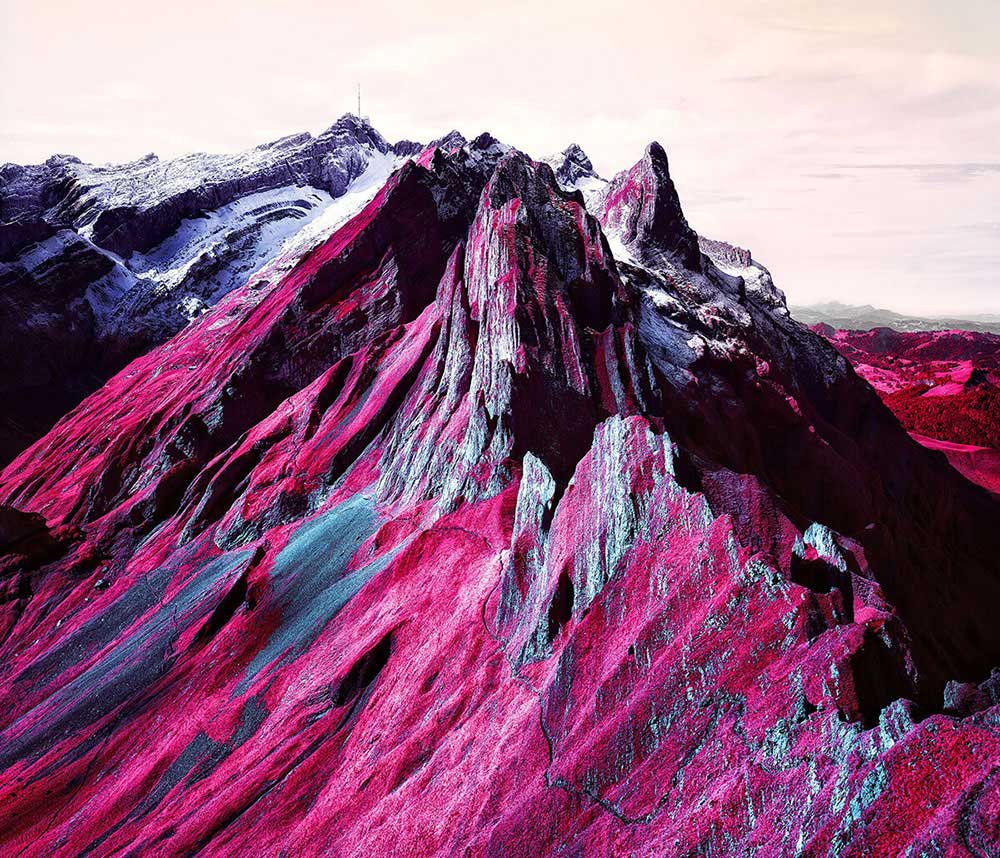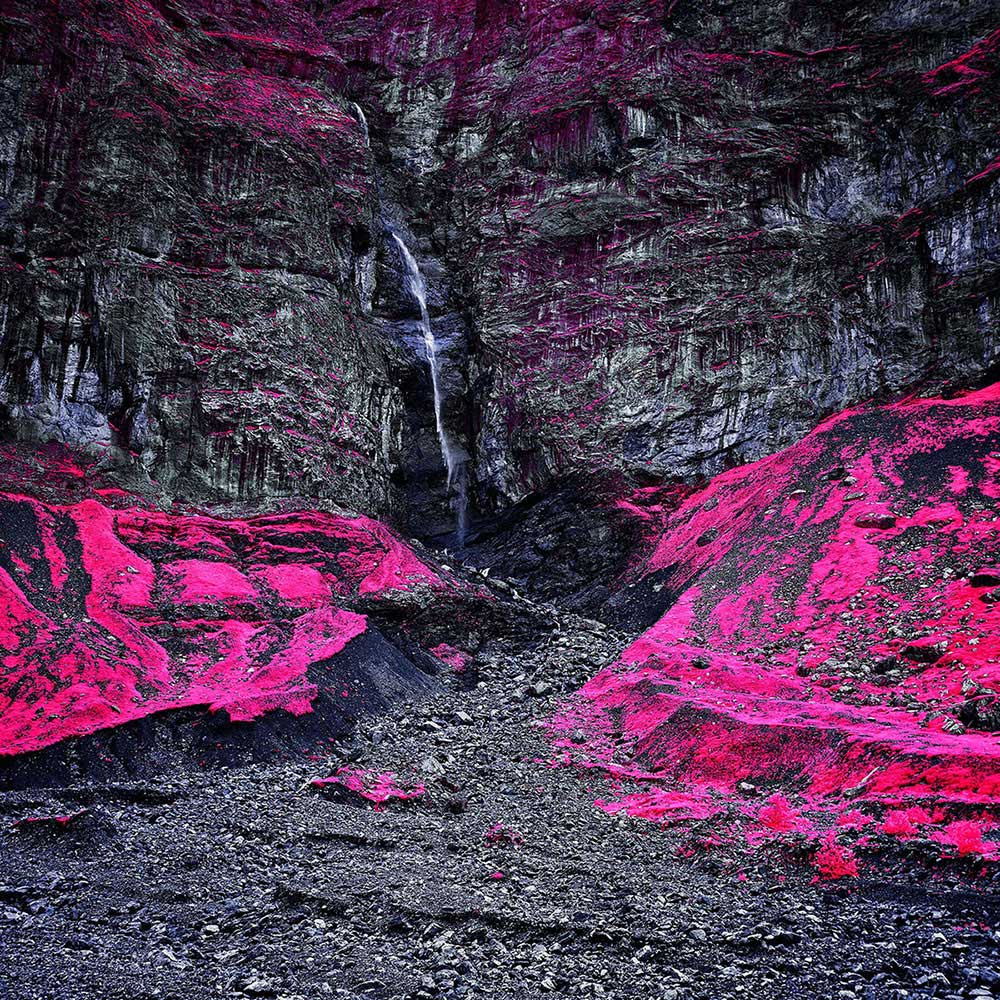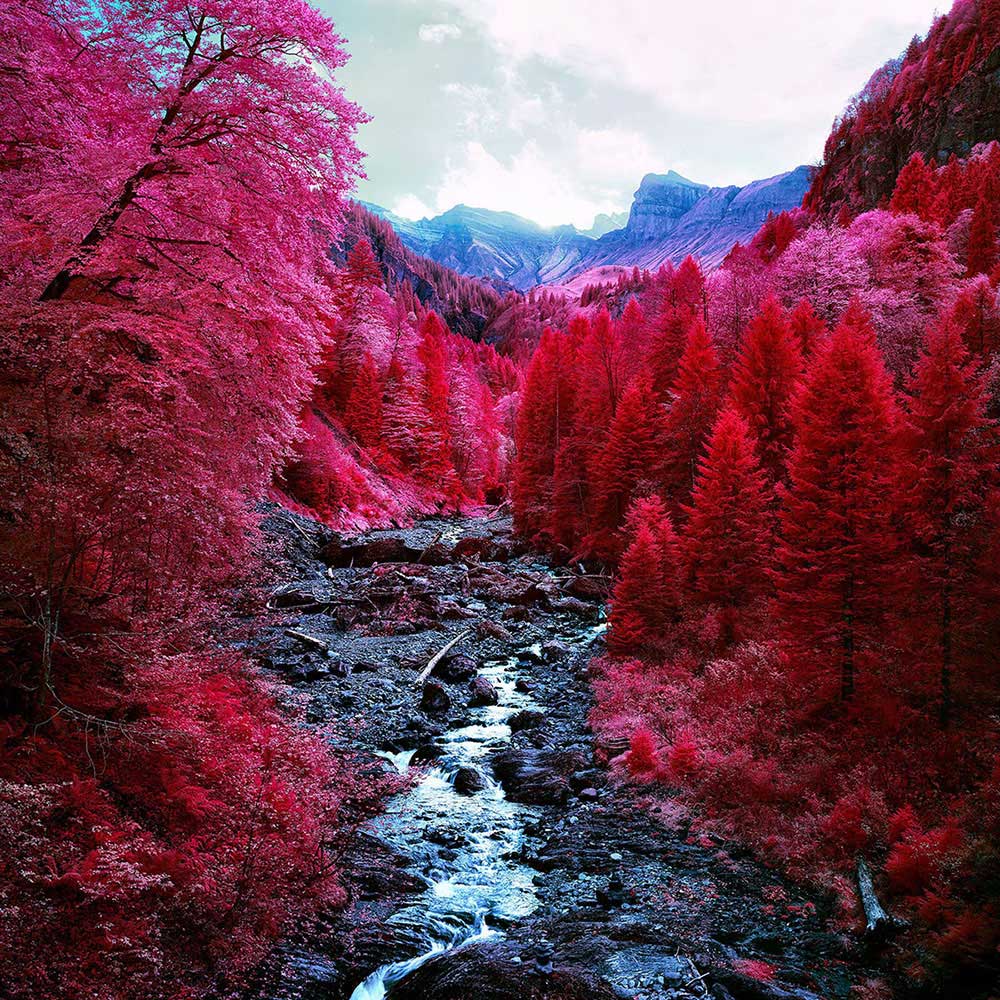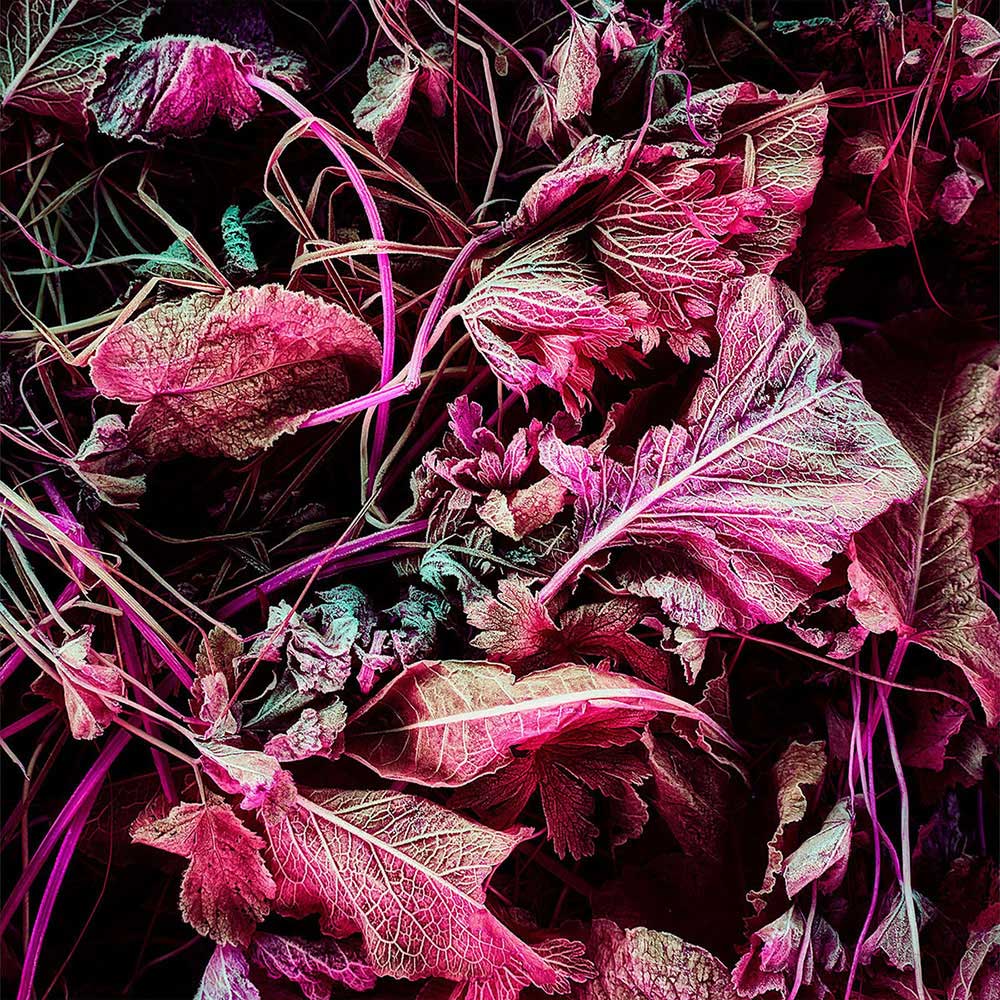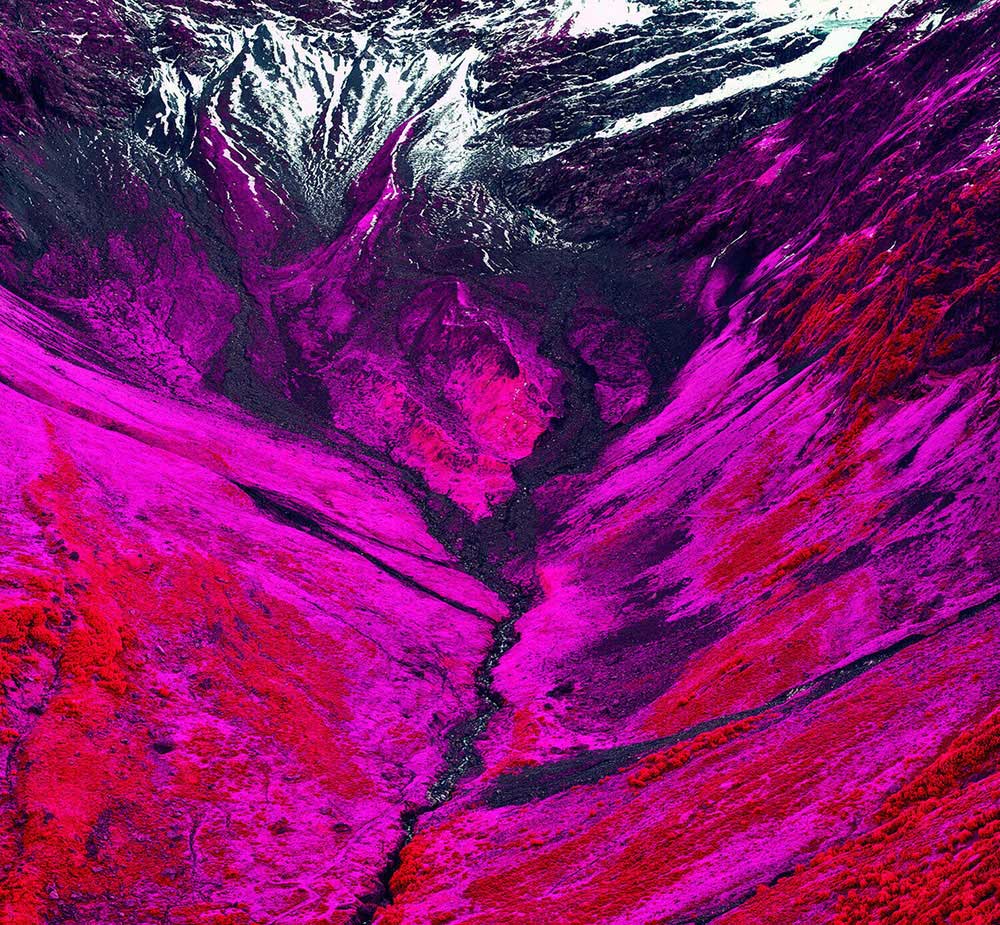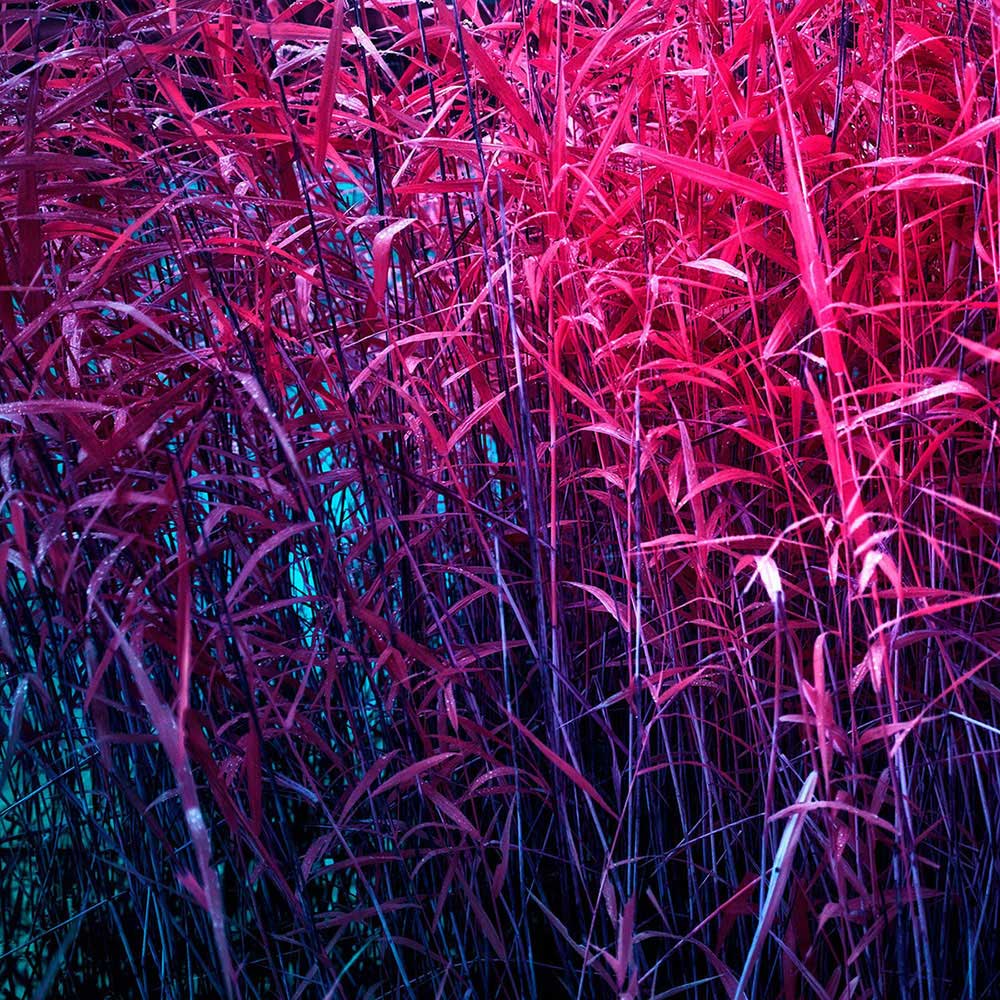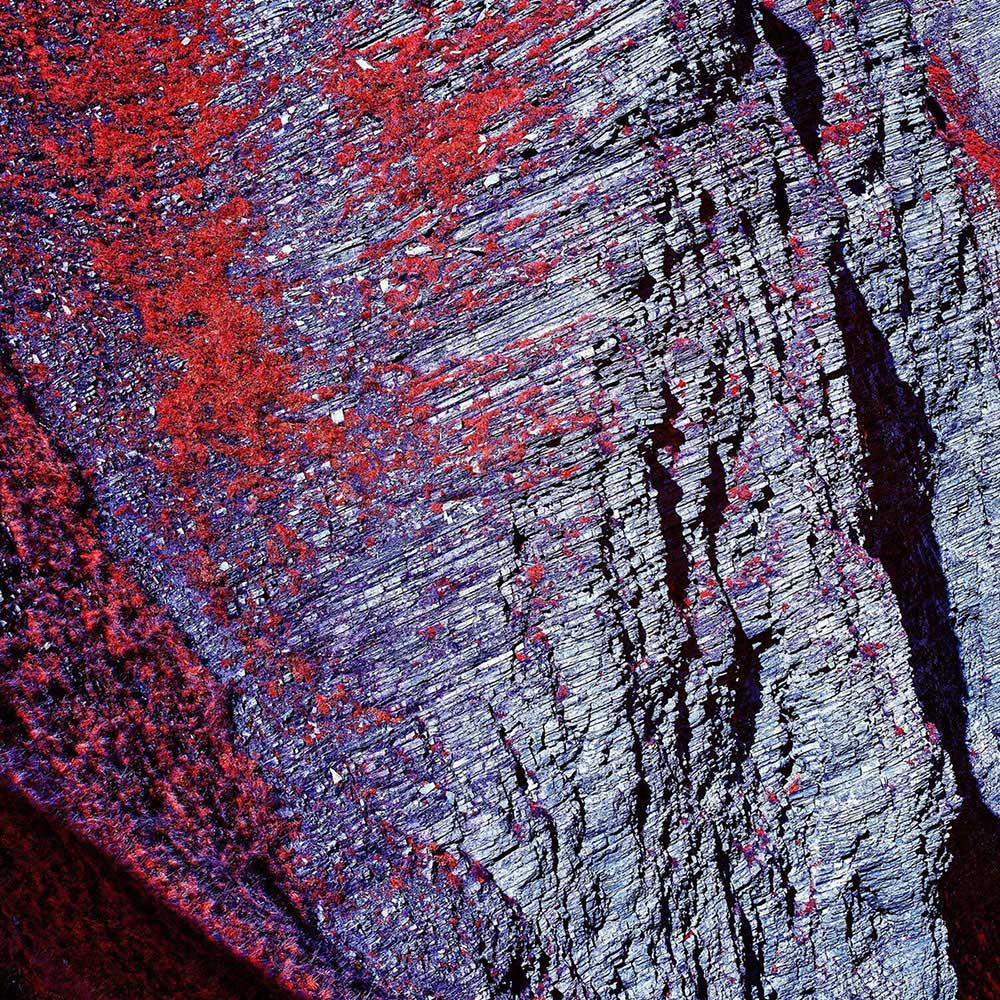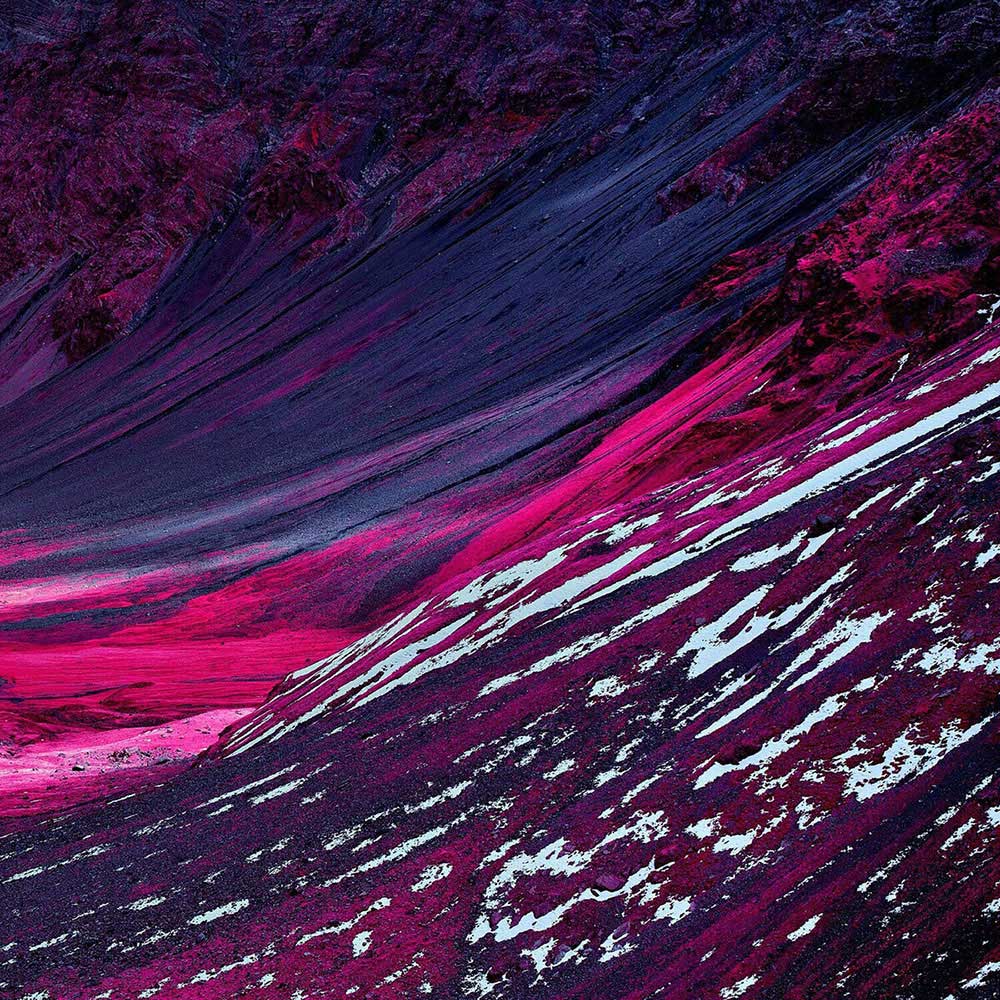To get a fresh look at natures beauty in a modern era, Zak van Biljon went beyond the visible spectrum to capture these vivid images.
The technique, developed for military surveillance and crop surveys, captures near-infrared light: wavelengths of electromagnetic radiation that fall between what we see as red and the longer wavelengths used for thermal imaging. The pigment in plant leaves, chlorophyll, strongly absorbs visible light which they use as a source of energy in the process of photosynthesis.
The cell structure of the leaves, on the other hand, strongly reflects near-infrared light. A strong absorption at these wavelengths would only result in overheating the plant and possibly damaging the tissues. The human eye is unable to perceive infrared light but it is exactly this reflected energy, which reacts with infrared-sensitive material to create electric pinks and vibrant reds.
The concept
Our idea of landscapes is not landscape by itself. Nothing exists by itself but only through perception. Our perception, however, is subject to both individual watching and classifying what we see.
The classification is strongly subdued to the imagery with which we are confronted every day. The famous Windows computer desktop image “Bliss” and others of this kind have become a kind of nature of which we believe that is is “true” nature.
Pictures of natures are not about falsifying nature itself but are reflecting our perception of nature. What kind of image do we have? On social media channels user are sharing zillions of filtered photos of nature – or what they think nature must look like.
But at the same time people are subdued to an irresistible attraction to the bright vivid lights of cities and screens. The artificial becomes real and the natural reality or the reality of nature is hyped by means of technology such as filtered instagram pictures. Thus both, nature as a reality and as a concept gets random.
The pictures
We need a new way of looking at nature in the 21st century, just like the landscape painters of the 19th century who were confronted with industrialization. Today, humanity’s increasing urbanization ends once and for all our symbiotic relationship with nature. Cities are growing into megacities, more than half of todays population was born in cities and this new generation is a technological generation, convenience driven but: nature free. And yet: humanity can never free itself from nature.
The vivid pinks and reds in Zak van Biljon’s work will therefore attract those neon city dwellers which think they have overcome nature and who are yet subconsciously reminded of nature out there. His art wants the viewer to remember the real landscape when looking at the ostensible unreal world of his photographs.
About Zak van Biljon
Red turf is the homeland of Zak van Biljon. The South African photographer, born 1981, spent his childhood and teenage years in both Johannesburg and Cape Town. 2003 he graduated as best student at the National College of Photography. With a study of black & white printing – ironically, for someone who grew up under the colourful impressions of the Rainbow Nation.
In 2004 he left the country and emigrated to Europe. It was in Rome, where he discovered another sunlight and in London, where he scored himself on top of booking lists for prestigious underground labels. He continued his career as a part-time commercial photographer in Zurich, Switzerland, exerting his mastery to his fine art projects.
His work range from digital to analog with skills in contemporary advertising and modern art photography. His main focus is the directorial handling of light – as shown in his recent art work, capture the world in infrared. The world seen in red and pink colours provides a new and impressive insight to reality as we know it. [Official Website]



